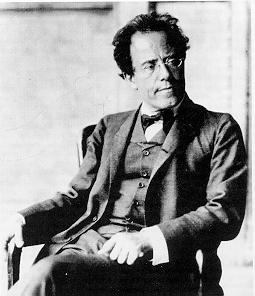Dallas takes on Mahler's symphonies
 MAHLER: Symphony No. 3. Nathalie Stutzmann, contralto; Women of the Dallas Symphony Chorus; Texas Boy's Choir; Dallas Symphony Orchestra; Andrew Litton, conductor. Delos 3248; 2 CDs.
MAHLER: Symphony No. 3. Nathalie Stutzmann, contralto; Women of the Dallas Symphony Chorus; Texas Boy's Choir; Dallas Symphony Orchestra; Andrew Litton, conductor. Delos 3248; 2 CDs. I've said this so many times now that I think I better stop repeating it. But not until I've said it one more time: I cannot believe I'm reviewing another recording of a Mahler symphony, perhaps for the fourth time this month.
Wasn't it only yesterday (well, the late 1930s) that I could count the number of available Mahler recordings on the fingers of one hand? And have one or two fingers left over?
Of course another way to look at that is this: That was more than 60 years ago. Even so, the proliferation of recordings of the symphonies of Gustav Mahler over that period of time seems to be to be most unusual. I suppose a lot of my reasoning is because I loved Mahler and could hear so little of him on records. I could hear even less at concerts or over the radio.
Now, everybody plays Mahler. Mahler, Mahler, Mahler. Look at Schwann's catalog of recordings, Opus. There are so many available recordings of Mahler that you could almost throw a dart at the listings and come up with a good one.
The recording under consideration in this column is a good one, a very good one. We've already had Andrew Litton's recording of the composer's Symphony No. 2 (Delos 3237). The conductor and orchestra plan to record all of the Mahler symphonies (there are nine and an unfinished 10th). What was surprising to me is that they began this undertaking with Symphony No. 2.
To say the very least, I found it bold. There are some great recordings of this symphony, made by the greatest of symphony orchestras with the greatest of conductors. Even so, Litton proved how accomplished a conductor he has become over the past several years, and the orchestra (something more than 100 instrumentalists) showed what a fine ensemble they have become under their talented leader's direction (since 1994).
The Mahler symphonies give the listener a wonderful opportunity to evaluate each of several choirs of the orchestra. As I listened to each one, I was very impressed. With Mahler, there is so much ensemble required, especially in the brass. The members of the orchestra meet this requirement in a most superior manner.
I have a personal like in the playing of Mahler: I like it played with a lilt. Bruno Walter played it in such a manner, and he learned his Mahler from the composer himself. Over many years of listening I have missed that lilt whenever it wasn't there, and it is not there in some (fine) recordings by some of the most respected conductors of the past and the present.
I find it in Litton's interpretations, and I like it. It gives a touch of the Viennese idiom to the playing of Mahler, and I like that. Is it the only way to play Mahler? No. But it's my preferred way.
It is obvious that Mahler's Third Symphony celebrates his love of nature. When you read today the titles of the work's six movements, you read them in traditional musical terms (although in German, not Italian).
But originally he had titled them "Summer comes marching in," "What the flowers in the meadow tell me," "What the animals in the forest tell me," and so on. Something in an entirely different mood than the one he adopted in Symphony No. 2.
The text for the contralto soloist is from Nietzsche's "Also sprach Zarathustra." Nathalie Stutzmann sings it beautifully. And that, of course, is exactly one would expect from her. Operas, concerts, recitalists, recordings, she has done it all. Her lovely contralto voice seems made to order for Nietzsche's heart-rending poem of man's grief and his joy.
Also splendid is the singing of the women's Chorus and the Texas Boy's Choir in excerpts from "Des Knaben Wunderhorn" ("The Youth's Magic Horn").
The decision by a conductor to record all of a particular composer's symphonies is still unusual. And if he does do this, it is inevitable that an evaluation of his accomplishment will be made on the sum of his effort.
It will be enjoyable to continue to learn what this young American conductor does with all of the Mahler symphonies - and no doubt with at least some of the composer's mighty tone poems; for me, particularly if he chooses to record "Das Lied von der Erda" ("The Song of the Earth"), which, of course, even though it is not named so, is a symphony.
Once again Delos shows the brilliance of its "Virtual Reality" recording method.
(c) Copley News Service
advertisement

Author: King Durkee
Archives
Nathan Milstein first among equals
Musical mastery is in the details
Half century of classics sprout from modest seed
Hundred years warble: sounds of a century
A Vivaldi album for all seasons
Westminster lives on
15-work collection a tribute to compassion
Remastered recordings music to the ears
Grand band music
The elusive quality of superstars
Vault yields some forgotten gems
Remembering Rampal
Argerich is always awesome
Mahler - words and music
Liszt`s music at its best
More Articles







